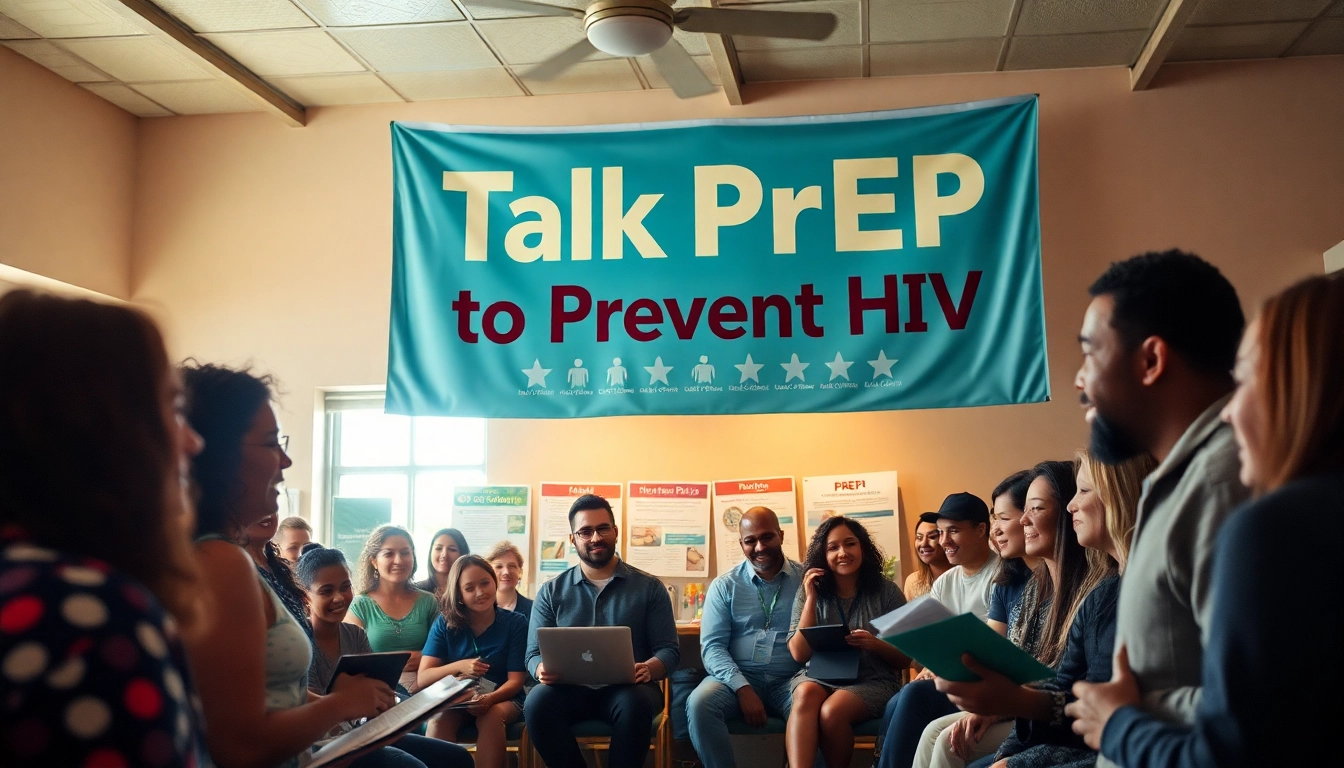Understanding PrEP: The Key to HIV Prevention
Pre-exposure prophylaxis, commonly known as PrEP, has emerged as a revolutionary method in the fight against HIV. This preventive treatment is crucial for individuals at high risk of HIV infection and can significantly reduce their chances of contracting the virus. The increasing prevalence of PrEP in healthcare discussions highlights the importance of understanding its mechanisms, benefits, and accessibility. For those wanting to learn more about this important topic, exploring resources such as https://talkprep.org/ can provide valuable insights.
What is PrEP and How Does it Work?
PrEP is a daily medication that HIV-negative individuals can take to prevent HIV infection. It contains two antiretroviral drugs that work together to block the virus’s ability to establish an infection in the body. When taken consistently, PrEP can reduce the risk of contracting HIV from sex by up to 99% and from injection drug use by at least 74%. This pharmacological approach has been endorsed by health organizations worldwide because of its effectiveness when combined with safe sex practices, such as condom use.
Benefits of PrEP in Preventing HIV Transmission
The primary benefit of PrEP is its high effectiveness in preventing HIV transmission. In addition to its effectiveness, PrEP offers several other advantages:
- Empowerment: Individuals taking PrEP gain control over their sexual health, reducing anxiety about potential HIV exposure.
- Flexibility: PrEP can be integrated into existing lifestyles, allowing for straightforward use alongside regular health routines.
- Community Impact: Widespread use of PrEP among high-risk populations leads to a decrease in overall HIV transmission rates within communities.
Who is Eligible for PrEP?
While PrEP is a powerful tool, it is not for everyone. Eligibility for PrEP typically includes individuals who are HIV-negative and at high risk for HIV exposure. This includes:
- Men who have sex with men and have had unprotected anal sex.
- Heterosexual individuals who have HIV-positive partners.
- Individuals who share needles or have a history of substances misuse.
- Those with multiple sexual partners and inconsistent use of condoms.
The Importance of Open Conversations About HIV
Creating a Safe Space for Dialogue
Initiating discussions about HIV can be sensitive, but it’s vital that open and honest conversations take place. A safe space allows individuals to express their concerns without fear of judgment. Healthcare providers, community leaders, and educators play crucial roles in fostering these dialogues by creating environments where individuals feel comfortable discussing sexual health and HIV prevention strategies, including PrEP.
How to Start the Conversation About PrEP
Starting a conversation about PrEP can be daunting but can be approached in several ways:
- Provide Educational Resources: Equip individuals with materials that explain PrEP, its benefits, and eligibility.
- Share Personal Stories: Testimonials from PrEP users can demystify the treatment and encourage discussions.
- Be Open and Honest: Approach the topic directly and gauge comfort levels, allowing for questions and clarifications.
Overcoming Stigma Surrounding HIV Prevention
Stigma surrounding HIV and its treatments often inhibits conversations and the adoption of preventive measures. Education plays a pivotal role in changing perceptions. Community outreach programs and awareness campaigns can help dispel myths about HIV transmission and PrEP, creating a more informed public that understands the importance of prevention strategies.
Accessing PrEP: Your Path to Prevention through https://talkprep.org/
Finding Healthcare Providers for PrEP Consultations
Getting started with PrEP requires consulting a healthcare provider. Individuals can find providers through various channels:
- Visit local health departments for recommendations on certified healthcare professionals.
- Utilize online directories specializing in sexual health services.
- Engage with community organizations that provide HIV education and PrEP resources.
Understanding the PrEP Prescription Process
The process of obtaining a PrEP prescription typically involves several steps:
- Initial Consultation: A healthcare provider performs an HIV test and assesses medical history.
- Screening for STIs: Additional screenings may be required, including tests for other sexually transmitted infections.
- Follow-Up: Regular follow-ups every three months are crucial to monitor health and effectiveness of the medication.
Financial Assistance and Resources for PrEP
The cost of PrEP can be a barrier for many individuals. However, various resources and financial assistance programs are available to help:
- Insurance Coverage: Many health plans cover PrEP; checking with one’s provider is essential.
- Patient Assistance Programs: Programs through pharmaceutical companies can provide medications at reduced costs or for free.
- Community Health Centers: These centers often provide PrEP services on a sliding fee scale based on income.
Real-Life Success Stories: The Impact of PrEP
How PrEP Changed Lives: Testimonials
The narratives of individuals who have successfully used PrEP highlight its life-changing effects. From individuals who previously felt vulnerable to HIV to those who regained confidence in their sexual relationships, these testimonials underscore the importance of PrEP in practical settings. Such personal stories can motivate others to consider PrEP and engage in open discussions about their sexual health.
Case Studies Showcasing Community Impact
Numerous community-based programs have reported decreased rates of new HIV infections following the implementation of comprehensive PrEP initiatives. These case studies provide compelling evidence of the effectiveness of PrEP when used as part of a broader public health strategy. Communities that have embraced PrEP as a proactive measure have seen transformative changes not only in health outcomes but also in community attitudes toward HIV.
Lessons Learned from Users of PrEP
Feedback from PrEP users has been instrumental in shaping future outreach and education efforts. Key lessons learned include:
- The importance of ongoing support and education for first-time users.
- Addressing concerns about side effects and efficacy openly can enhance user confidence.
- Community involvement in sharing information about PrEP increases its acceptance.
Staying Committed: Follow-Up and Ongoing Education
Scheduled Testing and Follow-Up Visits
Staying on PrEP requires discipline and ongoing commitment to regular testing. These follow-up visits are essential not only for monitoring HIV status but also for assessing overall health and any potential side effects from the medication. Engaging with healthcare providers during these visits can reinforce the importance of adherence to the medication schedule and safe sex practices.
Ongoing Education: Tools and Resources from https://talkprep.org/
Continuous education around HIV prevention and PrEP is vital for both users and healthcare providers. Various platforms provide educational tools, including online resources, workshops, and community events aimed at enhancing knowledge about PrEP’s benefits, usage, and access. Utilizing resources available on platforms like https://talkprep.org/ can empower individuals with vital information for personal health decisions.
Innovative Programs Supporting Long-Term PrEP Use
Programs that focus on sustaining long-term adherence to PrEP are emerging worldwide. These initiatives often integrate technology, such as mobile health apps that remind users to take their medication and track side effects. Furthermore, peer support groups and community outreach programs can provide the encouragement needed to maintain a consistent PrEP regimen. As research continues, these innovative approaches will help ensure that PrEP remains a sustainable choice in HIV prevention.

